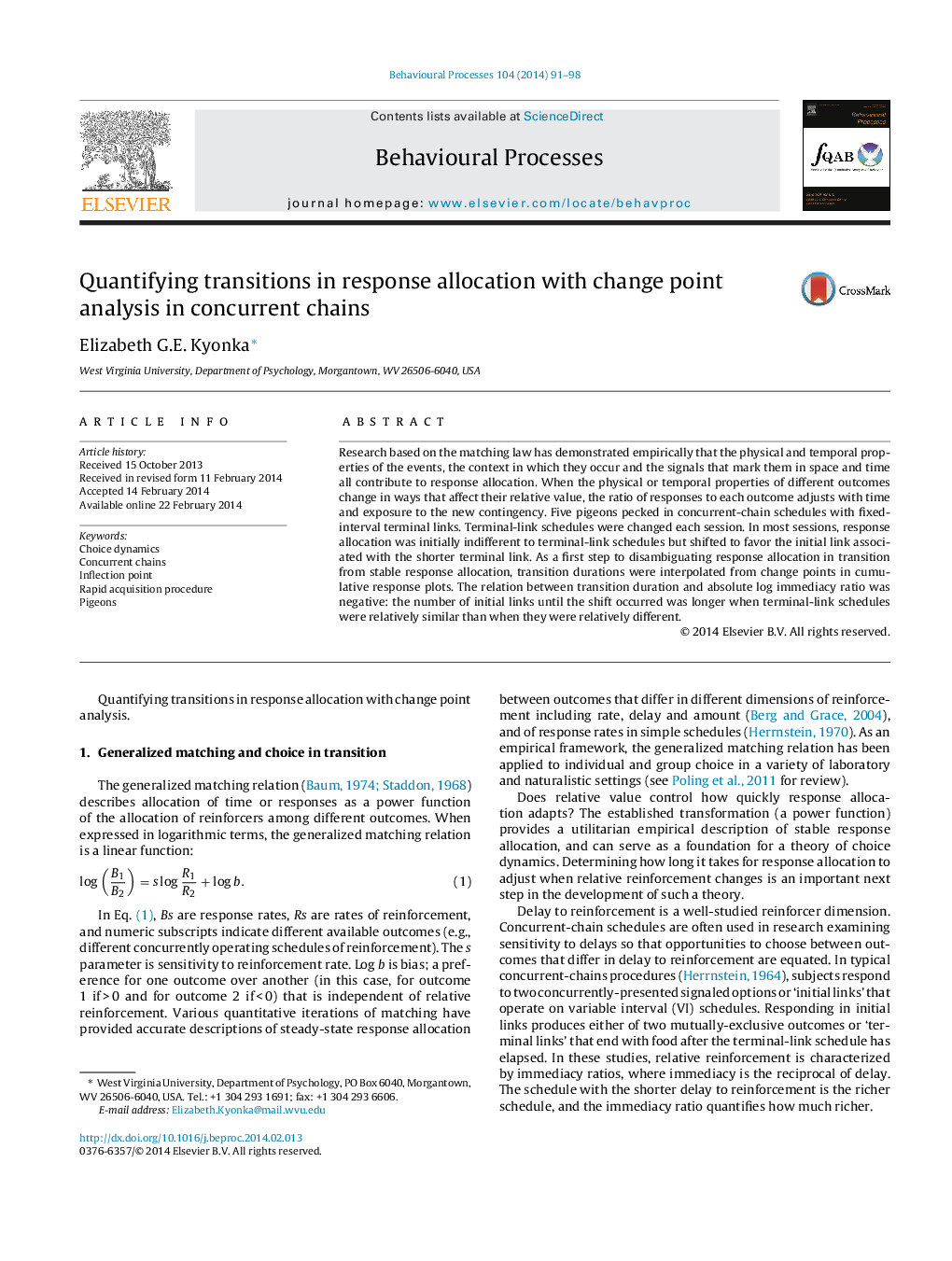| Article ID | Journal | Published Year | Pages | File Type |
|---|---|---|---|---|
| 2426761 | Behavioural Processes | 2014 | 8 Pages |
•Pigeons pecked in concurrent-chain schedules. FI terminal links changed each session.•Choice was initially indifferent but shifted to favor the shorter terminal link.•Durations of transitions were interpolated from cumulative response plots.•Transitions took longer when terminal links were similar compared to when they were different.
Research based on the matching law has demonstrated empirically that the physical and temporal properties of the events, the context in which they occur and the signals that mark them in space and time all contribute to response allocation. When the physical or temporal properties of different outcomes change in ways that affect their relative value, the ratio of responses to each outcome adjusts with time and exposure to the new contingency. Five pigeons pecked in concurrent-chain schedules with fixed-interval terminal links. Terminal-link schedules were changed each session. In most sessions, response allocation was initially indifferent to terminal-link schedules but shifted to favor the initial link associated with the shorter terminal link. As a first step to disambiguating response allocation in transition from stable response allocation, transition durations were interpolated from change points in cumulative response plots. The relation between transition duration and absolute log immediacy ratio was negative: the number of initial links until the shift occurred was longer when terminal-link schedules were relatively similar than when they were relatively different.
